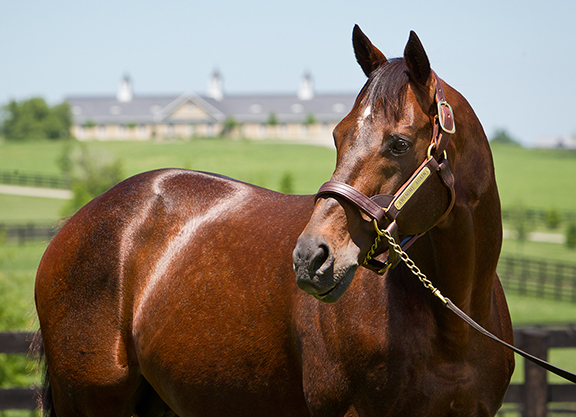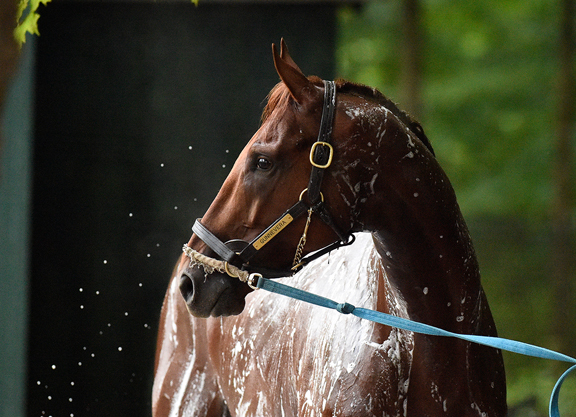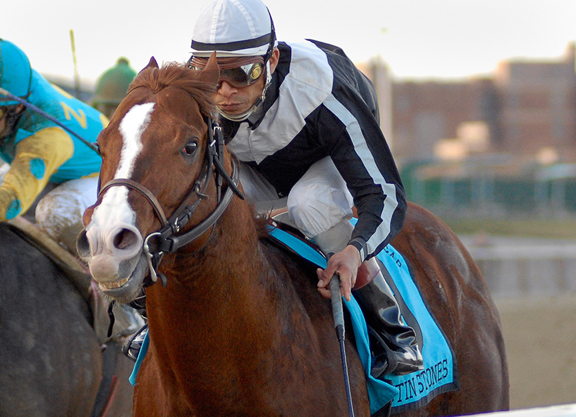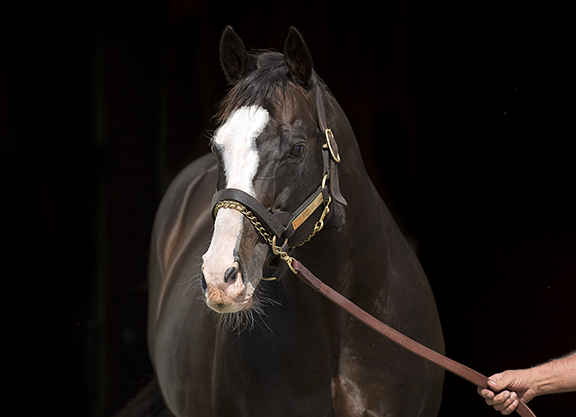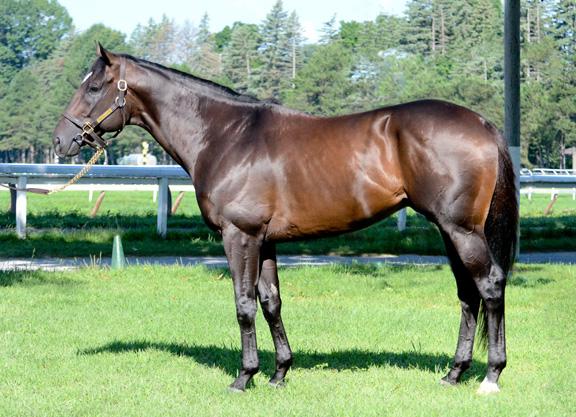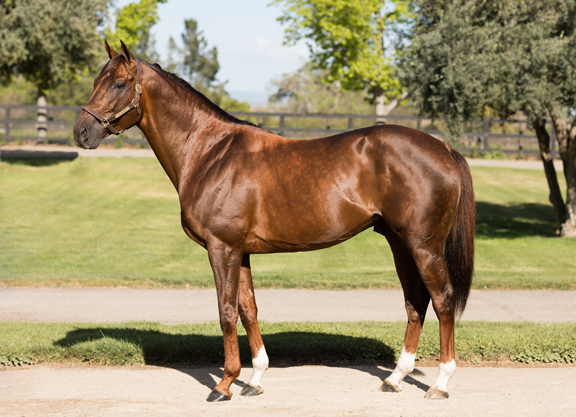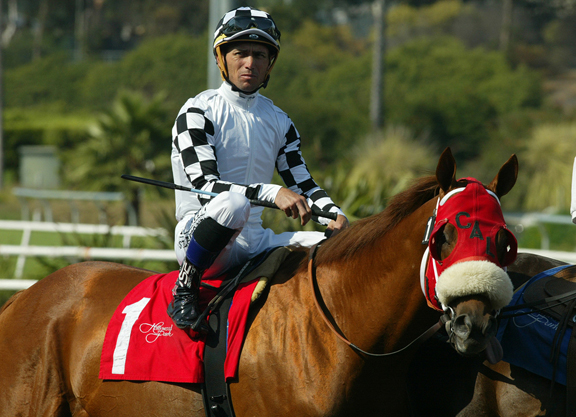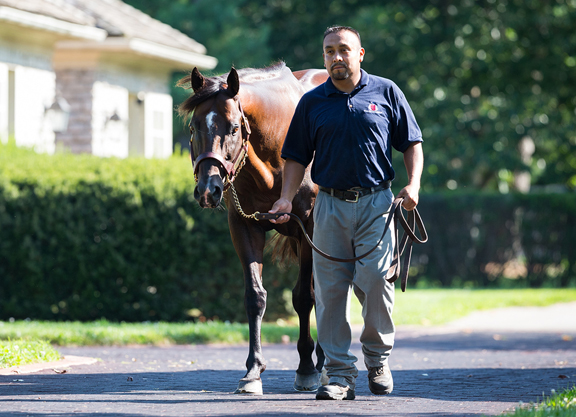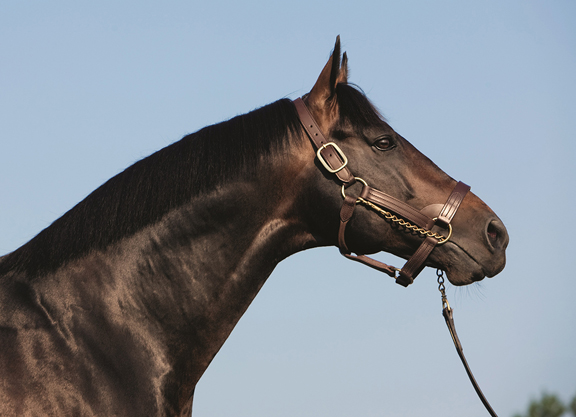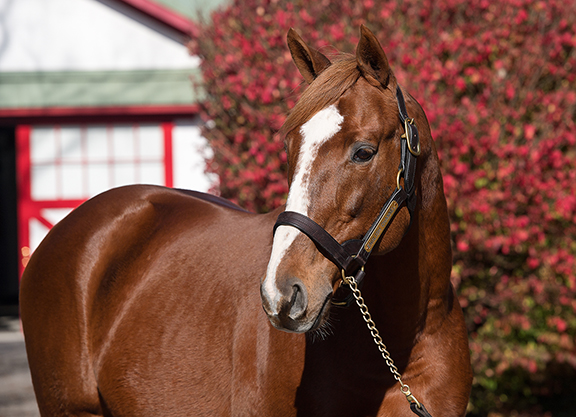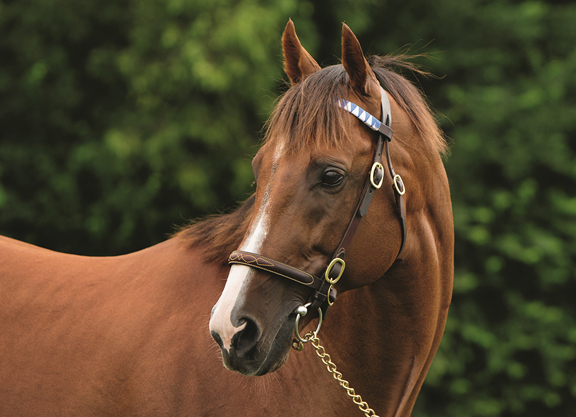Welcome to our annual winter survey of Kentucky stallion options–with the difference, this time round, that the emphasis will be far more strictly and succinctly on value.
Over the past couple of years, acknowledging of the brevity of commercial momentum for so many sires once losing their freshman luster, we've got into the habit of granting some attention (more or less courteous!) to just about every stallion in the Bluegrass. But such an exhaustive approach has doubtless proved still more exhausting for the reader than for the compiler.
So, we've resolved to cut to the chase: the most horse for your buck. We'll still be taking each intake in turn, starting here with the new recruits; and we'll briefly assess their overall state of play before making and attempting to justify our selections for the Value Podium. We'll also acknowledge one or two who got close–while omitting more than enough names for no damning inferences to be made…
Of course, it's a wholly subjective exercise. Different stallions fit different mares. Okay, so maybe I would be more inclined than some to try and breed a horse that can actually run, when for many people selling must be the pragmatic priority. But I do persist in the naïve belief that there should be nothing more commercial, in the medium term, than putting a few winners under your mare.
No apologies either, then, for reiterating the usual caveat that almost every new stallion will turn out to be standing at a career-high fee. For every rookie that eventually hits a home run, a dozen will end up packing their bags either for a regional program or overseas.
This observation tends to annoy some people, who complain that proven sires are beyond reach and that you have to try and get ahead of the curve with an untested commodity. But I just don't buy that, when so many affordable stallions are shunned despite showing a consistent ability to get runners. As it is, stallion farms have an ever-narrowing window to retrieve their investment before everyone moves onto the next turn of the carousel. It's not the way they'd choose; and nor are the breeders really to blame. We in the media are certainly complicit, but the real fault rests with those directing investment at ringside.
Regardless, the object of this exercise isn't to identify the prospect “most likely”. If you were doing that, you would plainly start with the blatantly credentialed Essential Quality (Tapit), the sensationally talented Charlatan (Speightstown) or the knockout physical Maxfield (Street Sense). But these are priced accordingly (at $75,000, $50,000 and $40,000) and we're trying to find fees that improve your odds.
True, value can be found at all levels of the market: sometimes the most expensive stallion may actually be more competitively priced than cheaper peers. And this does feel like a fairly ordinary intake, in terms of depth. But it's going to be hard for any rookie to advance his fee, when this is the one opportunity for stud accountants to bank on some demand. Still, we can but try.
Bubbling under: It's rare for an animal as accomplished as Knicks Go to go to stud at so restrained a fee. Whether access to the Horse of the Year elect for just $30,000 at TaylorMade will produce commercial dividends simply depends on how far the market acknowledges that.
Paynter puts him in a tricky place. On the one hand, Knicks Go can't pretend to be a son of Tapit, like Essential Quality. On the other, if he confirms his sire to be terrific value, then you can access the proven fount of his excellence even more inexpensively.
His first three dams, moreover, are by left-field names in Outflanker, Allens Prospect and Medaille d'Or. But these are respectively sons of Danzig (out of a half-sister to Weekend Surprise), Mr. Prospector and Secretariat. Given that Paynter's own mother represents a dynasty that unexpectedly evolved into royalty, it's not as though we are short of viable genetic explanations for Knicks Go.
Remember that his dam deployed stakes speed through four seasons–so anticipating her son's remarkable 2-1-1 Breeders' Cup record at ages two, four and five. The bottom line is that he's standing at a much lower fee than a couple that couldn't lay a glove on him, and nobody should be at all surprised to see him prove his elite caliber all over again.
A quick word for Modernist, a sufficiently respectable racehorse to deserve an opportunity to recycle some illustrious genes from Darby Dan at $10,000. Uncle Mo appears to be a precocious sire of sires, and the same adjective applies to the late Bernardini as a broodmare sire: Modernist is out of a Bernardini half-sister to Breeders' Cup winners Sweet Catomine and Life Is Sweet (both by Storm Cat). And I like an influence as robust as Kris S. behind both the second dam and Uncle Mo's mother, who is by his son Arch.
BRONZE: TACITUS (Tapit–Close Hatches by First Defence)
TaylorMade Stallions $10,000
No doubt Tacitus lost quite a lot of friends in winning just one of his last 12 races. But that record definitely didn't do justice to the ability he had shown in winning his maiden, the GII Tampa Bay Derby (stakes record) and GII Wood Memorial on his way to making the Derby frame via a wide trip. Arguably he was again undone by race position when contriving to lose the GI Belmont S. to Sir Winston (Awesome Again), but he soon ran out of excuses in thereafter mustering only a romp against overmatched rivals in the GII Suburban S.
He did subsequently manage a creditable fourth in the GI Breeders' Cup Classic, but the hope that he might piece everything back together this time round backfired horribly when he surfaced only in October, to no great effect, after trying his luck in the desert in February.
But while there were clearly issues ultimately thwarting his fulfilment, Tacitus had shown authentic glimpses of class–sufficient, certainly, to be worth a second chance in his new career. Because none of the stallions in this intake can surpass his genetic package, and he has been priced to tempt even the wariest.
Obviously, he is by a champion stallion out of a champion mare. But the real excitement comes from the sheer depth of a family tree tracing, via a branch cultivated through three generations by Juddmonte, to one of the great modern matriarchs in fifth dam Best In Show (Traffic Judge). The dynasty has repeatedly flashed its continued vitality this year, while this particular branch has another young stallion starting out in Japan in Siskin. That Irish Classic winner shares his sire First Defence with the dam of Tacitus, five-time Grade I winner Close Hatches, along with her unhappily-named sister Lockdown (made the frame in the GI Kentucky Oaks). First Defence, incidentally, is by a son of Unbridled out of Seattle Slew mare–none other than Honest Lady, from Toussaud's brood of Grade I winners–while Tapit is by a grandson of Seattle Slew out of an Unbridled mare.
All in all, then, Tacitus has the kind of seamless pedigree that would have warranted a roll of the dice in, say, a top regional program even if he had never made it onto the track. As it is, he showed enough ability to bank $3.7 million. Conceivably, then, you're looking at a sire who could emulate Tapit himself by redeeming at stud a degree of underachievement on the racetrack.
SILVER: SILVER STATE (Hard Spun–Supreme by Empire Maker)
Claiborne $20,000
Who else could get the silver medal than a horse bearing this name? There's an instant, old-school resonance to a GI Met Mile winner standing at a farm like this, and Claiborne tend to give clients a very fair chance in pricing their new stallions.
It would clearly be edifying for Hard Spun, as our youngest connection to Danzig, to come up with one or two worthy heirs and Silver State developed a pretty eligible profile with maturity. Having only been pushing the margins of the Derby trail as a Fair Grounds sophomore, Hard Spun became an exemplary project for his barn, regrouping after a lay-off to run up a six-timer as he progressed through the grades. He tapered off thereafter, but he had established himself as a tough and classy miler who had put some Danzig pep into a page with plenty of stretch.
Arguably, in fact, he might have flourished from better opportunity to explore his stamina. Certainly, the seeding of his family entitles Silver State to sire Classic types: his graded stakes-placed dam is by Empire Maker; his granddam is a sister to Monarchos, their mother being by Dixieland Band; and the fourth dam is by the doughty influence Roberto out of a half-sister to the mother of Dynaformer.
Roberto recurs in Silver State's pedigree as sire of Hard Spun's granddam, and so flags up the key to why this horse can be a still better stallion than he was a racehorse. For he combines Darby Dan royalty top and bottom. That Roberto granddam was a half-sister to Little Current, which means she was in turn out of a half-sister to two other farm legends in Chateaugay and Primonetta.
I can only imagine that Darby Dan would have loved to welcome Silver State “home” to the farm that cultivated the families of both sire and dam. As it is, it feels apt enough that he retires to the farm that stood his grandsire Danzig. You can measure Silver State's physique by his $450,000 yearling tag, while he won a race that has historically announced many a stallion by making them run that sweeping Belmont mile round a single turn, on a single, speed-carrying gasp.
Pedigree, check. Physique, check. Performance, check. If that's not enough for you, good luck.
GOLD: KNOWN AGENDA (Curlin–Byrama (GB) by Byron {GB})
Spendthrift $10,000
There's been a lot of water under the bridge since, but it's definitely worth rowing back to the spring and remembering how unequivocally blinkers had confirmed Known Agenda's place among the sophomore elite. He would hardly be the first good horse to derail in the Triple Crown series–and the Derby definitely didn't set up for his strengths anyway–and fortunately he had shown the commercial sense to win what is nowadays treated as an almost automatic signpost to stallion stardom, the GI Florida Derby.
A trend like that should not be embraced too literally, of course, but in this case his success corroborated a breakout 11-length romp in blinkers on his previous start. His raw talent had never been in doubt, after the Aqueduct maiden in which he dragged Greatest Honour–to me, still the most flamboyant talent in the crop–21 lengths clear of a colt that subsequently proved his own graded-stakes caliber.
Known Agenda (Curlin) has a most attractive shape to his pedigree, combining a two-turn big hitter on the main track with first and second dams of mutually contrasting profile: respectively a Grade I winner by a sprinting grandson of Danzig, and a daughter of a Classic distaff influence in Europe, Darshaan (GB), himself a son of the copper-bottomed stamina tap Shirley Heights (GB). If the damsire is unfamiliar, Europeans will recall the speed he inherited from both parents; and his bloodlines are regal. There are seams of gold along Known Agenda's bottom line, too: it gave us the redoubtable European influence Pharly (Fr), for instance; the third dam beat an aggregate 59 rivals in winning three consecutive sprints as a juvenile; and among the strands of the indispensable Princequillo are both Round Table and his full sister.
Known Agenda did enough on the track to suggest that he was blending the best of both worlds: speed and stamina, dirt and turf. That, to me, is the foremost commodity we should be seeking in new blood.
He has reliably been priced to have every chance at Spendthrift. That clearly means you are unlikely to be offering the only Known Agenda, at any given sale, but if our priority is value, this is the guy in this intake best equipped to multiply his yield. While you might not always agree with the principles that drive the market, we know how it functions and a breeder can only put bread on the table by anticipating demand. Call it… knowing the agenda! He graduates from an exemplary program and, while there are more accomplished rookies available, they will have to work a lot harder to move up their fees from where they are starting.
The post Value Sires for 2022, Part 1: New Stallions appeared first on TDN | Thoroughbred Daily News | Horse Racing News, Results and Video | Thoroughbred Breeding and Auctions.
